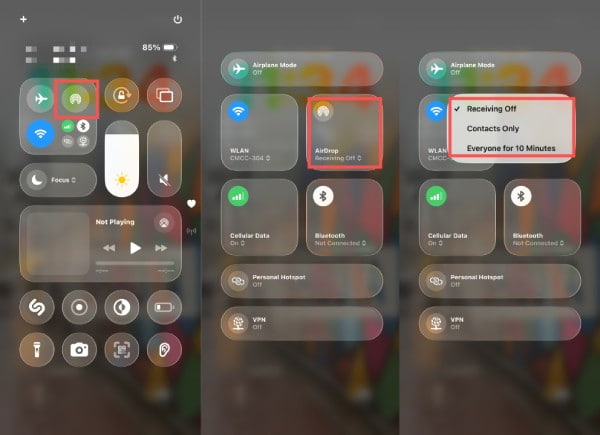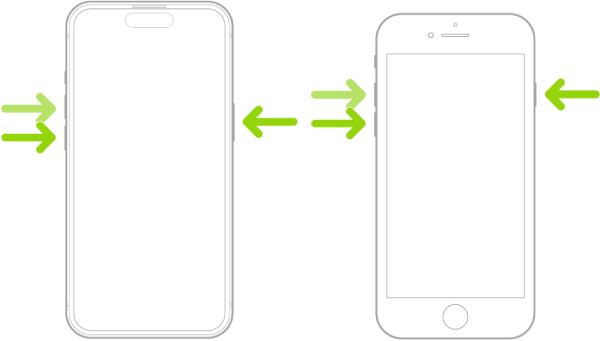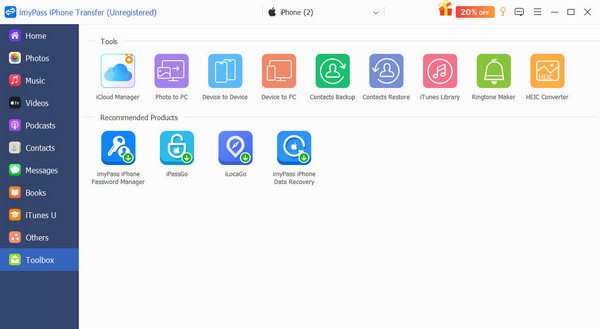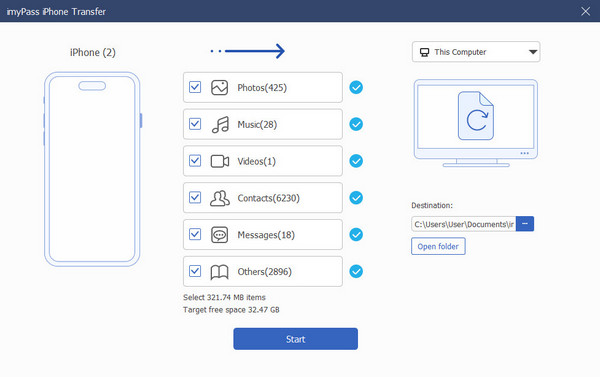7 Solutions to AirDrop Not Working for Data Transfer
AirDrop is not working? Many people may be at a loss when they encounter this problem. As one of the most convenient features of Apple, AirDrop enables you to quickly share various files between Apple devices, including photos, videos, music, and more. However, it can be frustrating when you are about to share something interesting with your friends and suddenly find that AirDrop has stopped working. And at that moment, you might not know precisely what went wrong.
But don't worry. After reading this article, no matter what causes the AirDrop to stop working, you can quickly find the key reasons and solve them step by step. Start reading to explore why AirDrop doesn't work and how to make it run smoothly.

In this article:
Part 1. Possible Reasons for AirDrop Not Working
To solve the problem of AirDrop not working more efficiently, the top priority is to figure out precisely what caused this issue. The fundamental issue of this problem might simply be caused by your Settings, or it could stem from deeper software errors and other issues. After confirming the cause of the problem, you can quickly find countermeasures based on it. Generally speaking, the possible reasons why AirDrop doesn't work may be as follows:
1. AirDrop Not Enabled: Many people may turn off AirDrop by default to save power. However, no matter which side is turned off, it will directly cause Airdrop to fail to proceed smoothly, thereby preventing successful file transfer.
2. Bluetooth or Wi-Fi Disabled: The basic working principle of AirDrop is based on Bluetooth and Wi-Fi transmission. If both functions are disabled, it cannot establish a standard connection, resulting in the device being unable to detect the other.
3. Devices Too Far Apart: When the distance between two devices exceeds the range of Bluetooth (approximately 30 feet), AirDrop won't work. Physical obstacles such as walls can also affect signal strength, preventing your device from retrieving AirDrop files.
4. Software Glitches: Outdated systems may lead AirDrop to malfunction. Please make sure each devices are updated to the latest version of its software, which can solve most of the problems when AirDrop stops working.
Part 2. Feasible Solutions to Failed AirDrop
Once you understand what's behind the problem, it's time to take action. AirDrop issues can often be resolved by making minor adjustments - such as enabling the feature, restarting devices, or updating the system. The following solutions cover the most effective fixes that users have found helpful when AirDrop refuses to work. Follow these methods one by one until your devices can connect and transfer data smoothly again.
Solution 1: Enable AirDrop on Both Devices
AirDrop won't work if it's turned off on either device. So, the first thing you need to do when you encounter the issue is to check AirDrop on both devices. To check, open the Control Center, tap AirDrop, and select Contacts Only or Everyone for 10 Minutes. Besides, make sure both Wi-Fi and Bluetooth are on. This ensures both devices are discoverable and can communicate properly during the file transfer.

Solution 2: Adjust the Distance Between Devices
AirDrop relies on Bluetooth for device detection, which only works within a short range. If your devices are too far apart, the connection may fail. Place them close together—within a few feet-to maintain a stable connection. Avoid obstacles like walls or metal objects that may interfere with the Bluetooth signal.

Solution 3: Restart Your Apple Device
When you're not sure if it is the malfunction or minor glitches that lead to AirDrop not working, restarting your devices can help a lot, as it stops all the processes working on your device to erase the error potentially. Simply power off both devices for a few minutes and restart them. This helps reset network connections and often restores AirDrop functionality.

Solution 4: Check Devices’ Storage Space
If your target device's storage is full, AirDrop cannot complete the transfer. Go to Settings > General > iPhone Storage (for Mac, under About This Mac > Storage on Mac) to check available space. Make sure there is enough storage space for the file transfer.

Solution 5: Disable VPN Services
When AirDrop supports file transfer based on Wi-Fi and Bluetooth, it indicates that VPN services can also block AirDrop's local network communication. If you're using a VPN, disconnect it temporarily before transferring files. Disabling the VPN during the process ensures your devices can find each other without interference.

Solution 6: Update iOS or Any Systems
AirDrop not working can also be ascribed to iOS or related software systems if they're old. Go to Settings > General > Software Update on your iPhone or System Settings > General > Software Update on Mac to install the latest version. Keeping your devices updated helps eliminate bugs and ensures that transfer via AirDrop can proceed successfully.

Solution 7: Turn off Mac’s Firewall
When you find AirDrop not working when you're using a Mac, then the problem can lie in its firewall, which might be blocking incoming connections. To shut it temporarily, go to System Settings > Network > Firewall, and turn it off or allow it during the process of AirDrop. But to ensure your Mac is under protection, make sure you re-enable the firewall to maintain your system's security.

Part 3: A More Stable Way to Transfer Data Than AirDrop
Although AirDrop is fast and convenient, they are not always reliable. You may encounter situations where AirDrop doesn't work for various reasons, and if they are interrupted during file transfer, it could even cause further losses. Therefore, a stable connection means security during transmission. This is why many users prefer to use more stable professional tools to complete file transfer.
imyPass iPhone Transfer is a reliable option that can ensure smooth, fast, and secure data transfer between devices, as it works via USB cable without relying on Wi-Fi or Bluetooth. With just a few clicks, you can easily move photos, videos, contacts, and more. Unlike AirDrop, it can work perfectly even when the device is offline, providing better control and stability for your file transfer.
Download imyPass iPhone Transfer from the web page. Then, set up the downloaded file, install it, and it will be launched automatically afterward.
Connect your iPhone to the computer using a USB cable for a stable transfer. Click Toolbox on the left bar and choose from Device to Device or Device to PC in line with your requirements for iPhone data transfer.

Click to choose the data you want to transfer to your iPhone, including Photos, Music, Videos, Contacts, Messages, and so on. You can select the specific iPhone data you want to transfer to manage your storage space.

Click Destination to select the folder for saving the data if you choose Device to PC. When you click Start, the process of transferring will be initiated automatically with this iCloud data recovery software.
Conclusion
AirDrop may stop working all of a sudden because of small issues like disabled settings, poor distance, or outdated software-can easily interrupt the process. By following the above fixes, you can quickly restore smooth file sharing via AirDrop. However, you may still encounter situations where AirDrop does not work. Using a more stable and versatile way can leave you with no such worries. imyPass iPhone Transfer is a trustworthy option to ensure the stability and safety of your file transfer.
Hot Solutions
-
Recover Data
- Recover WhatsApp View Once Photo
- Recover Deleted TikTok Videos on Mobile
- Recover Deleted Facebook Photo
- Recover Viber Messages, Photos, etc.
- Recover Deleted Snapchat Photos
- 5 Best Contact Recovery Apps
- Recover Deleted Discord Messages
- AppGeeker iOS Data Recovery Review
- Recover Data from DFU Mode
- Cannot Restore iPhone Backup
-
Unlock iOS
-
iOS Tips
-
Password Tips

